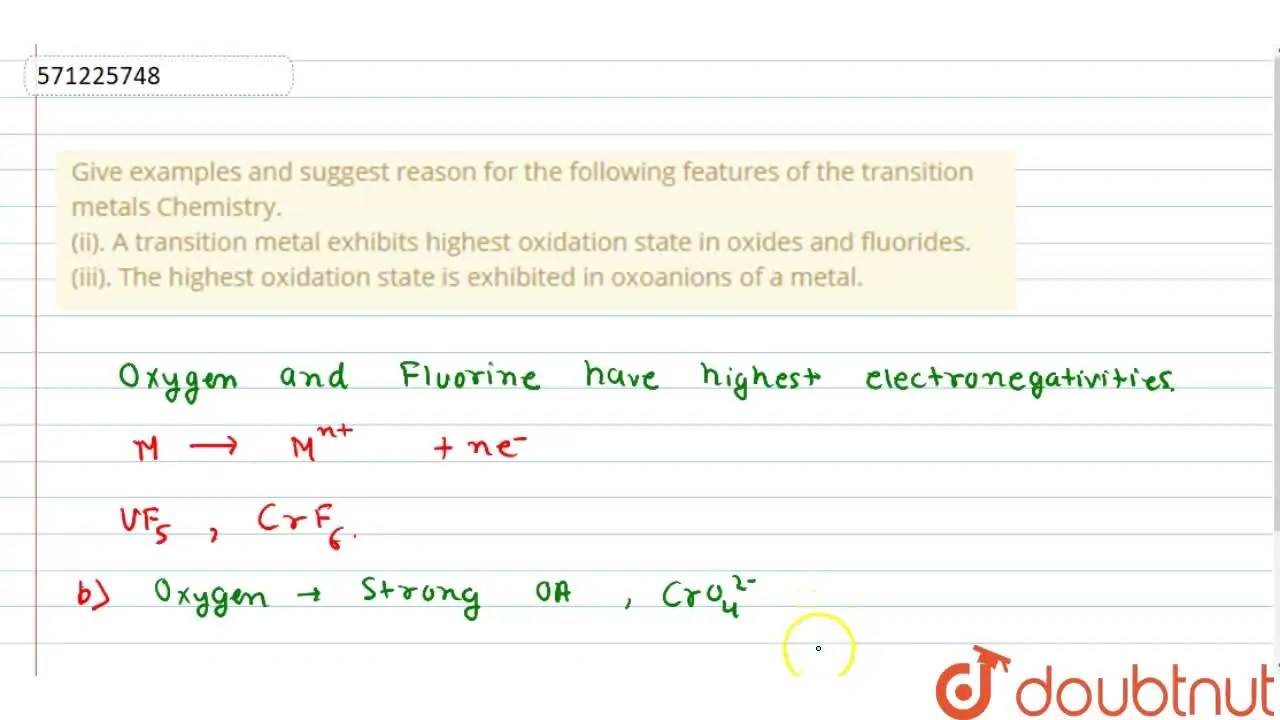Give examples and suggest reason for the following features of the transition metals Chemistry.
(ii). A transition metal exhibits highest oxidation state in oxides and fluorides.
(iii). The highest oxidation state is exhibited in oxoanions of a metal.
Video Solution
Text Solution
(i) In the case of a lower oxide of a transition metal, the metal atom has a low oxidation state. This means that some of the valence electrons of the metal atom are not involved in bonding. As a result, it can donate electrons and behave as a base.
On the other hand, in the case of a higher oxide of a transition metal, the metal atom has a high oxidation state. This means that the valence electrons are involved in bonding and so, they are unavailable. There is also a high effective nuclear charge.
As a result, it can accept electrons and behave as an acid.
For example,MnIIO is basic and MVIIn2O7 is acidic
(ii) Oxygen and fluorine act as strong oxidising agents because of their high electronegativities and small sizes. Hence, they bring out the highest oxidation states from the transition metals. In other words, a transition metal exhibits higher oxidation states in oxides and fluorides. For example, in OsF6 and V2O5, the oxidation states of Os and V are +6 and +5 respectively.
(iii) Oxygen is a strong oxidising agent due to its high electronegativity and small size. So, oxo-anions of a metal have the highest oxidation state. For example, in MnO−4, the oxidation state of Mn is +7.
|
Updated on:21/07/2023
Related Playlists
Similar Questions
Sulphur has highest oxidation state in
View SolutionHighest oxidation state is shown by
View SolutionWhich transition elements exhibit +8 oxidation state
View SolutionTransition elements exhibit _____ oxidation states.
View SolutionOxygen exhibits positive oxidation state in
View SolutionWhat is the highest oxidation state exhibited by group 17 elements ?
View SolutionWhich one of the following, exhibits highest oxidation state
View SolutionThe highest oxidation state exhibited by a transition elements is _______.
View SolutionWhich of the following transition metal shows the highest oxidation state:
View SolutionName any two transition metals which exhibit oxidation state of +8 .
View Solution


